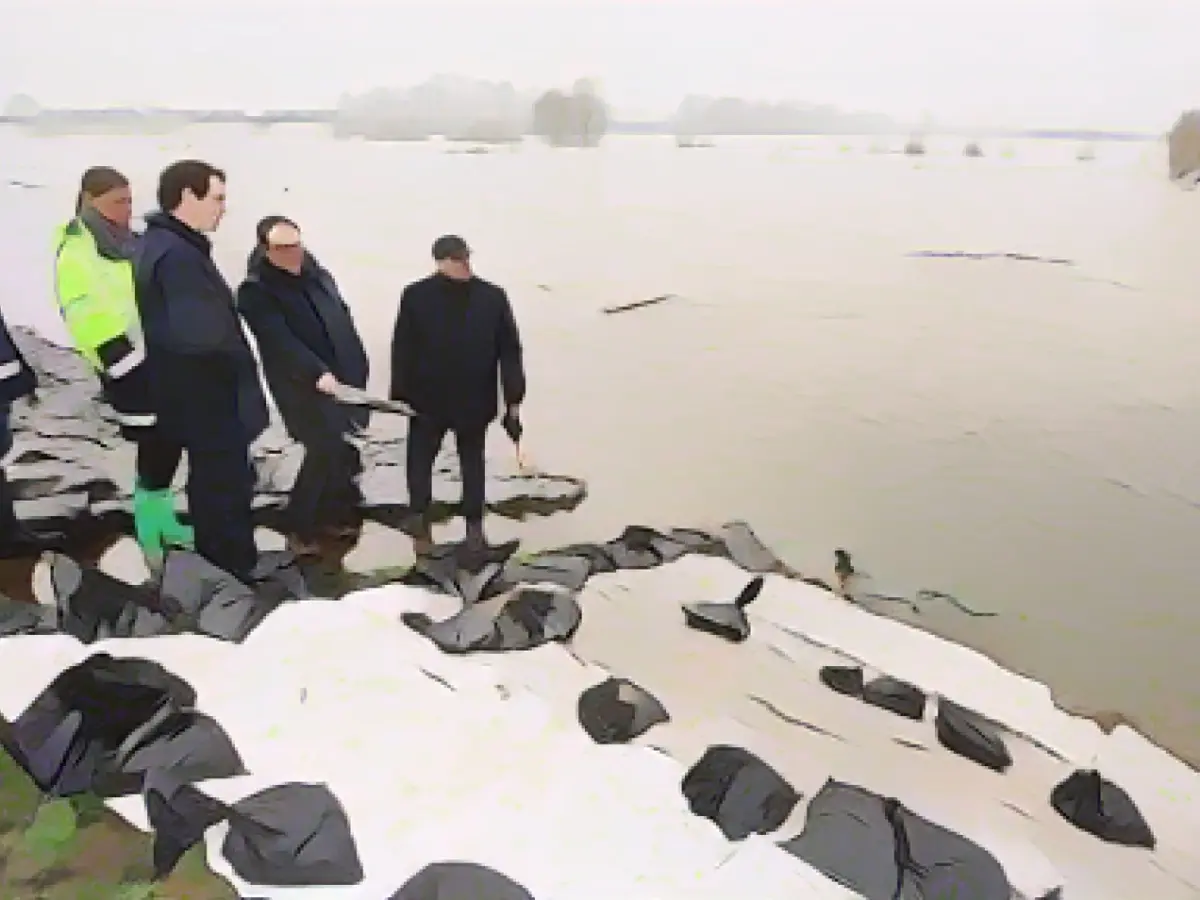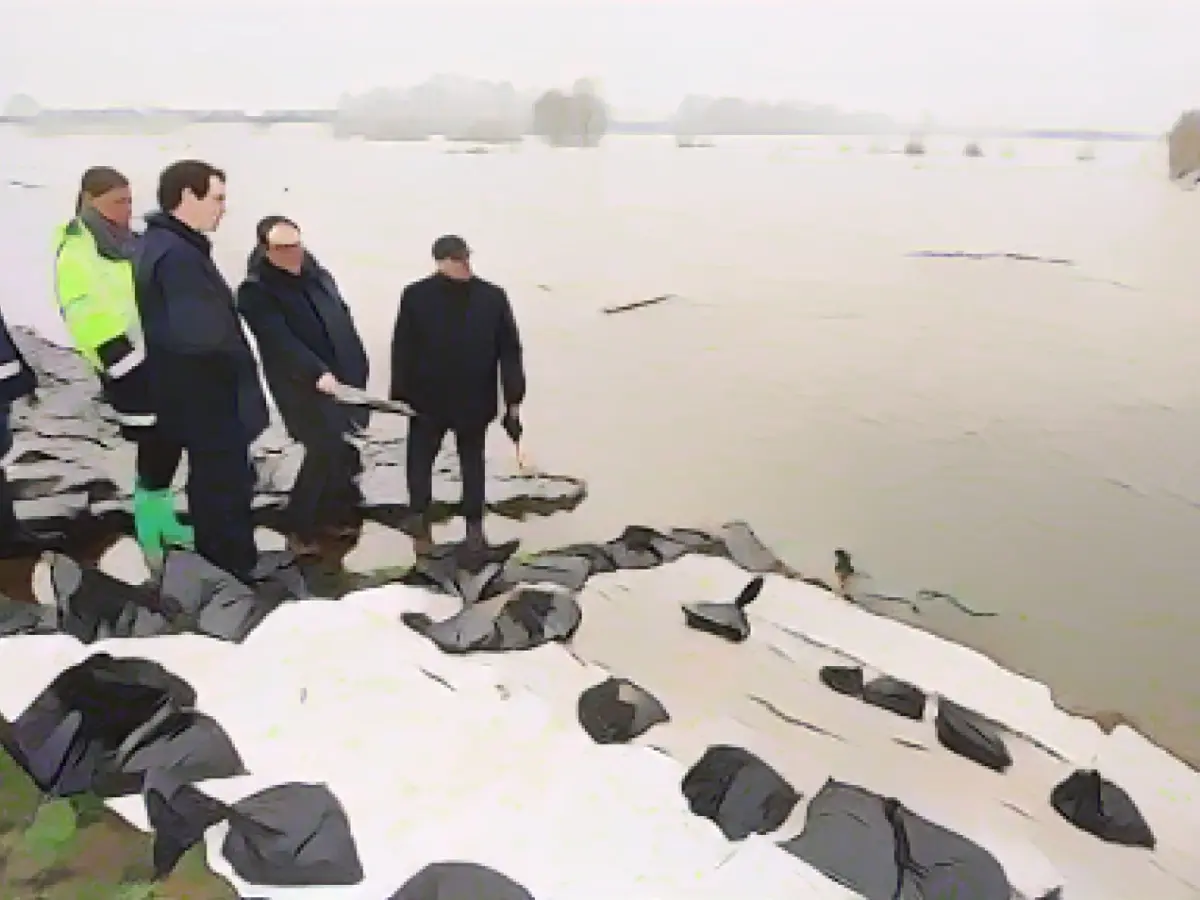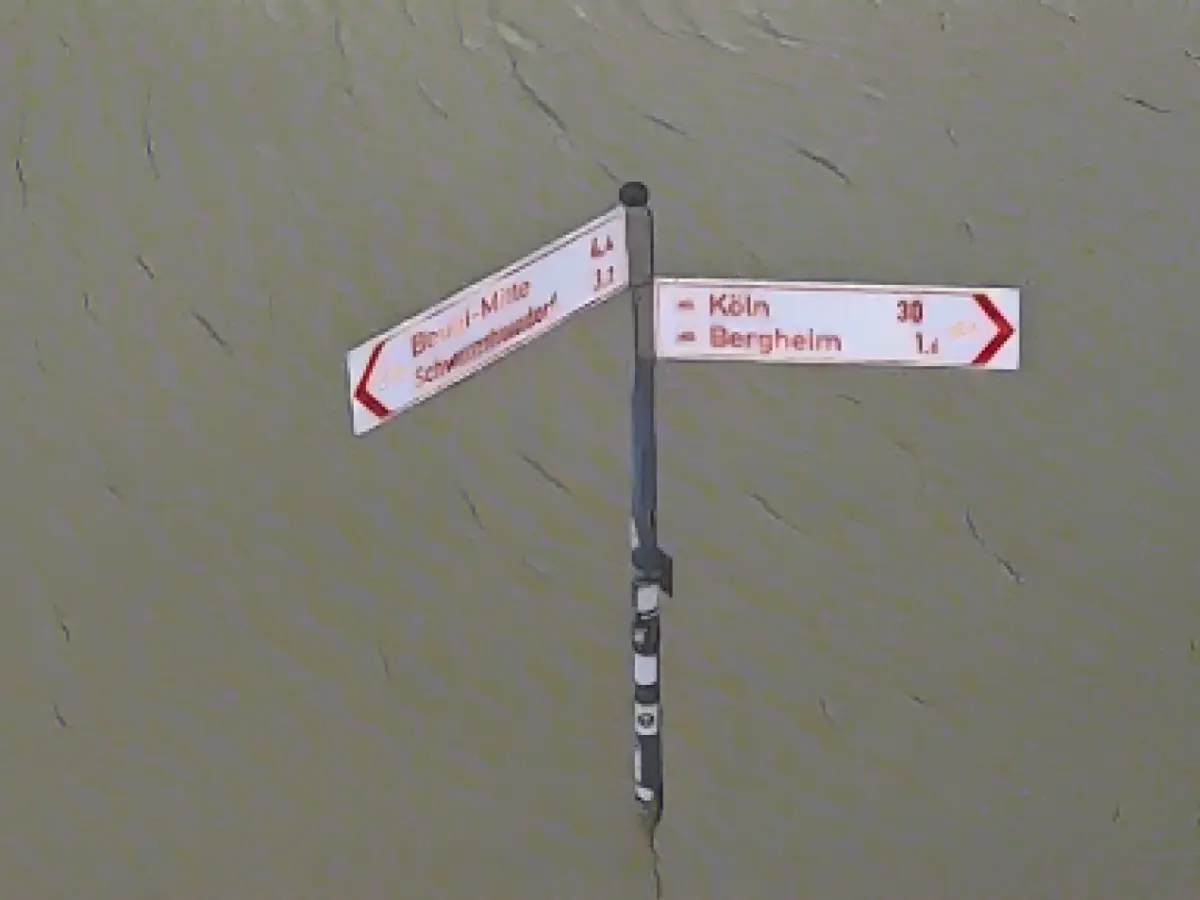In response to the persistent downpour leading to flooding in various parts of North Rhine-Westphalia, Environmental Minister Oliver Krischer implored extreme caution, as the city of Oberhausen grappled with a tense flood situation along the Ruhr dyke. On Christmas Day, Krischer assessed the dire situation at Oberhausen, stating, "We are facing a tense flood situation in North Rhine-Westphalia."
As per data released by the State Agency for Nature, Environment and Consumer Protection (Lanuv) on December 25th, the devastating impact of the floods was most pronounced in the eastern parts of the state. At six measuring stations on the Weser tributaries, the highest warning threshold was surpassed, posing a significant risk to built-up areas. The local authorities hold the responsibility for implementing necessary measures in response to this threat.
On Christmas morning, seventeen water gauges in North Rhine-Westphalia exceeded the second-highest warning level, signaling the potential flooding of individual properties or cellars. Areas affected include catchment areas of the Lippe, Ems, and Ruhr rivers. The first warning threshold was surpassed at 41 gauging stations, putting agricultural and forestry land at risk across Northern Germany.
Following the situation assessment, Krischer praised the courageous actions of numerous emergency services from various regions in North Rhine-Westphalia, whose efforts had successfully stabilized the Ruhr dyke in Oberhausen, which had displayed critical weaknesses. Prior to this, extensive measures were enacted to secure the dyke.
With heavy rainfall set to continue, Krischer reminded the public to remain vigilant, stay informed about the situation, and maintain a distance from waterbodies and dykes. He noted, "This is unpredictable." Regarding the future of flood protection in North Rhine-Westphalia, while renovations are clearly required, Krischer asserted that the dykes and flood protection systems were fundamentally serving their purpose.
Amidst the severe weather, the German Weather Service (DWD) expanded its severe weather warning to multiple districts and cities. The DWD predicted rainfall of between 15 and 25 liters per square meter in Bergisches Land and Siegerland regions by December 27th, with heavier downpours in congested areas, approaching up to 35 liters per square meter. Additionally, an additional 10 to 20 liters per square meter was expected to arrive from the Sauerland up to the Weserbergland. This rainfall is expected to reduce in intensity over the course of December 27th.
References:
Enrichment Insights: The flood situation in North Rhine-Westphalia, and specifically areas like the Ruhr dyke, benefits from various measures and technologies designed to manage flood risks. These include:
- Improved early warning systems: Utilization of advanced apps like "Meine Pegel" which offer real-time monitoring of water levels and issue timely warnings, ensuring citizens in Germany, the Netherlands, Switzerland, and Luxembourg are well-informed.
- Enhanced flood maps and modeling: Prioritizing the development and presentation of worst-case scenarios in hazard maps to foster more accurate warnings, including forecasts concerning inundation, flow velocities, blocked roads, and damage hotspots.
- Public education and evacuation procedures: Emphasizing the significance of public education and clear evacuation procedures to save lives during flood situations, highlighting the importance of timely evacuation messages over preserving belongings.
- Infrastructure maintenance and upgrades: Ensuring regular inspection and reinforcement of flood protection infrastructure, such as dikes and other barriers, to withstand extreme weather events.
These measures have proven vital in effectively managing flood risks across North Rhine-Westphalia and other regions in Germany.








